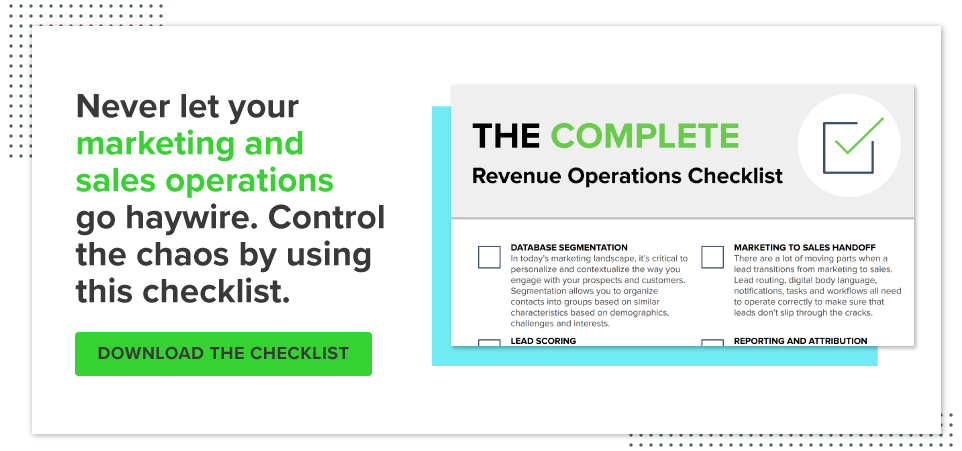When creating a new workflow or integrating two platforms, we always say “you can’t set it and forget it.”
Those operational elements are essential for your business to continue running smoothly. As software gets updated and business processes evolve, you need to ensure that your operational processes continue to function as intended.
3 Aspects of Your Operations You Need to QA
1. Integrations
A connected tech stack helps break down silos between your teams and provides visibility into your business practices company-wide. However, with all these disparate systems depending upon their integrations with one another, there’s a lot of room for things to go wrong. As you build out any integration, you also need to be thinking about building out a support team to go with it.
“You’re dealing with third parties, and so unlike a total in-house system where you control every aspect of what you’re doing, now there’s a lot of reliance on things you don’t have any control over,” says New Breed’s Director of Integrations and Applications Dave Lapointe.
For example, APIs change all the time, and that can break your connections.
“There has to be the ongoing monitoring of that, and not just monitoring but also the resources to be able to continually update your side of things to resolve those issues,” Dave says.
One of the struggles with QAing your integrations over time is that you won’t know there’s a problem until there’s a problem. One way to help with that is to set up automatic monitoring. You don’t necessarily need to have someone watching your integrations 24/7, but you do want to be alerted if something isn’t working as predicted.
“Building [automatic monitoring] into the integration is a really important part of the project,” Dave says. “Being able to write in the monitoring and the error handling is actually as important as the integration itself.”
2. Lead scoring
When you initially develop your lead scoring system, there’s a lot of hypothesizing involved. While you will have gathered some information about your prospects and customers and their buyer’s journey, you won’t definitively know that your lead scoring system will catch the best-fit prospects until you’ve had time to test it out.
“As you collect more data and it starts to illuminate what you’re seeing, there’s unanticipated things. You may find that what you thought was a great persona is not, therefore you need to change a workflow or adapt your lead scoring criteria to what you’re seeing in the real world,” Dave says.
Even once you do establish a solid lead scoring foundation, your customer base will evolve as your business grows. So, you might gain new personas, have existing ones become negative personas or shift which industries you can work with. In all those cases, you’ll need to adapt your lead scoring system so that it’s still enabling your sales team to prioritize the best-fit prospects.
3. Software implementation
Maintaining software implementations comes with a similar challenge to what you face with integrations: reliance on third parties. There are going to be ongoing updates, bug fixes, version updates and new features that are all out of your control.
However, the difference is that the majority of your implementations QA won’t focus on things breaking but rather on adapting to new evolutions in the software.
“It’s less of a reactionary QA process and more of a proactive [one], staying on top of the upcoming releases and new features,” Dave says. “A lot of the ongoing work isn’t dealing with problems that crop up. It’s more about getting the most out of your investment.”
You’ve purchased each software in your tech stack for a reason. Once you’ve implemented it, you want to ensure it’s serving its intended purpose and is fully adopted by your company.
The Takeaway
The software your business uses is constantly updating, and your business process will shift too. To ensure your RevOps tactics don’t become outdated, you have to QA them consistently.
Automation, monitoring and testing help you do that successfully.
“When you’re dealing with systems where there’s so many disconnected pieces acting as one, a big part of QA is how you can remove the human element,” Dave says. “How can we automate things we were doing manually to eliminate those potential points of failure through the process?”
Quinn Kanner
Quinn is a writer and copyeditor whose work ranges from journalism to travel writing to inbound marketing content.





